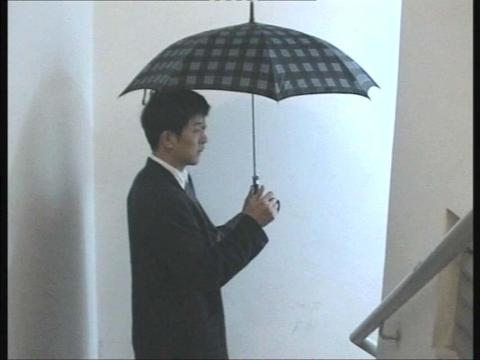ESSAY: YANG Fudong; City light (Chengshi zhiguang)
Yang Fudong was born in Beijing in 1971 and graduated from the China Academy of Fine Arts, Huangzhou in 1995. Since moving to Shanghai in 1998, Yang Fudong has maintained an active and extensive video and film presence in China, Japan, and Europe.
The narrative language of film and its ability to convey complex and profound human emotions is the foremost motivation for Yang Fudong's practice. He states: 'The Chinese approach is often to focus on a concept, something that I too am relatively enthralled by. A concept is something that is difficult to make tangible, yet it might be right at your side, it might be anywhere.'(1)
City light is a short video piece shot in Shanghai that embraces the concept of ritual and daily interaction in contemporary city living. Yang Fudong's characters convey a sense of indecision that ultimately stems from a sense of alienation from their physical surroundings - they appear almost lost, as if existing in their thoughts alone.
Much of metropolitan China has undergone rapid building development in the last decade, which has drastically changed the face of the urban landscape in Shanghai. Skyscrapers and architectural monuments now dominate the skyline, a direct product of the open-door policy of 1978 which saw China enter the international economic market. Destruction and reconstruction has resulted in what was once familiar now becoming alien and foreign, especially since many parts of the old cities are being demolished to make way for high-rise developments. This redevelopment of the urban precinct is a common factor for many industrialised cities in China, one that Yang Fudong alludes to as a universal phenomenon.
Yang Fudong has said that City light tackles the human experience of feeling like two people. In the video a man with an umbrella moves forward, while his shadow or other self remains behind as if stalled, or indecisive. A man and woman embrace while dancing but afterwards the camera only acknowledges the woman, caught in an absent gaze as if her mind is elsewhere. Yang Fudong explores the experience of living in a big city - the idea that one is supposed to belong to a place, yet anonymous to those around. The characters within this work act as if their minds desire something other than what they see. A gun is held stationary, poised for the trigger, while the holder's second self proceeds with the action he might be considering.
The dream-like state that Yang Fudong creates lacks a linear narrative and it is through humour that he portrays the daily rituals of city living; for instance, dancing in an office or on the median strip of a busy highway or running up and down stairs in alleyways holding umbrellas when it is not raining. The comical recognition of a second self portrays the reverie that often takes hold of someone who wishes to be elsewhere.
Yang Fudong seeks inspiration from what he refers to as 'literati short films'. In China, the literati were scholars and painters trained in Confucian classics, poetry and history. One of the most important aspects of their profession was their creative ability to express through word and image their relationship to culture in its past and present state. Just as these men of letters saw poetry as a conduit to their inner thoughts, Yang Fudong views the moving image as a necessary part of his artistic expression. His search for reflection on contemporary life in City lights is depicted in the cyclical repetition of waking and sleeping which portrays something that ends and starts again; his characters illustrate the banality of urban living in a whimsical trance-like sequence of actions that parallels the idea of a daydream.
1. 'An interview with Yang Fudong by Chen Xiaoyun', www.chinese-art.com/artists/YangFudong/, viewed 7 May 2003.
2. Wu, Hung. 'Self and Environment', in Reinterpretation: A Decade of Experimental Chinese Art. The First Guangzhou Triennial, Guangdong Museum of Art, Guangzhou, China, 2002, p.252.
